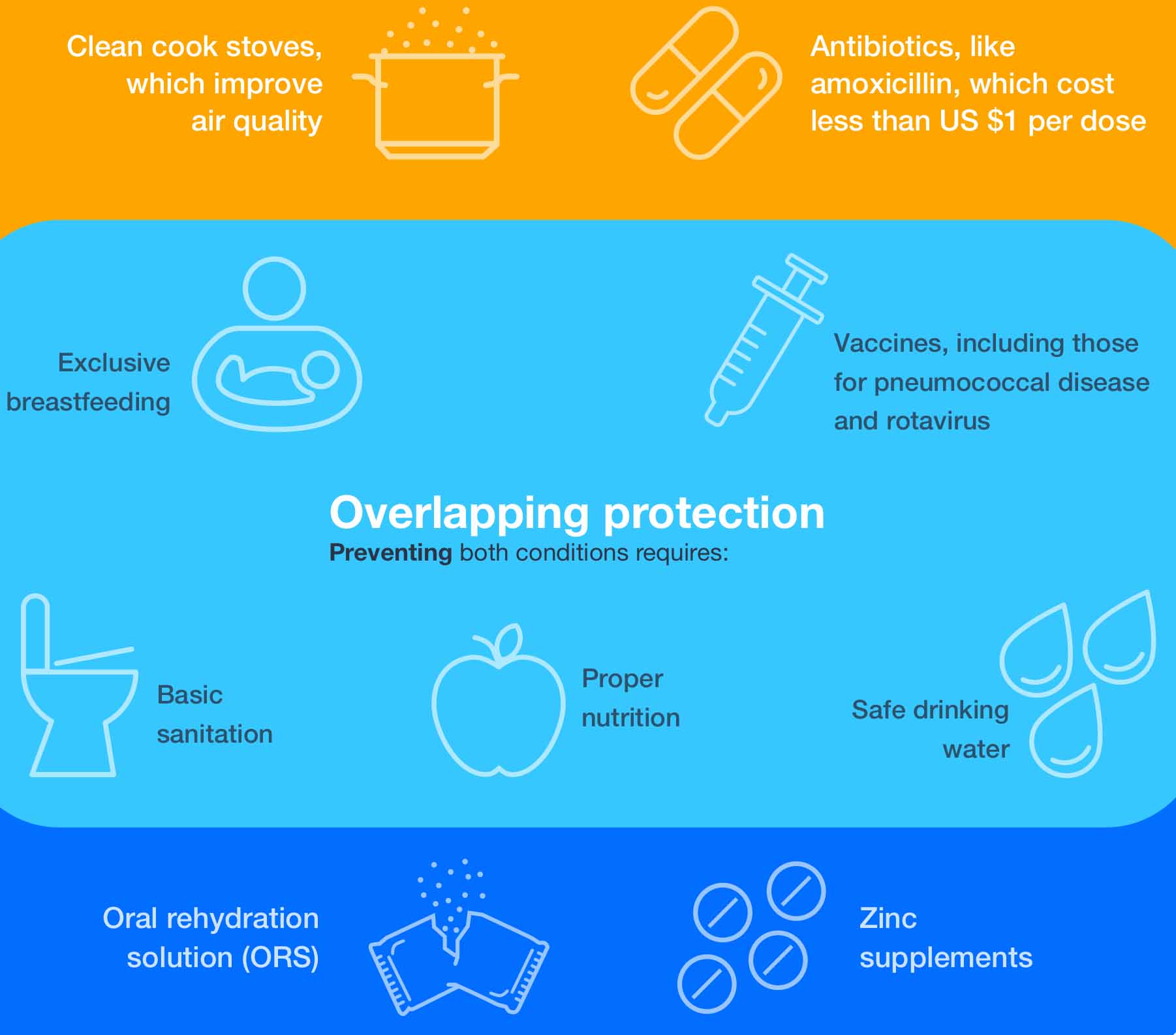
Pneumonia and Diarrhea: Are We Reaching Global Goals?

The Global Action Plan for the Prevention and Control of Pneumonia and Diarrhoea outlines an integrated approach to simultaneously tackle these leading infectious killers of children.
Scores are steadily rising in Mali, and children are the clear winners. This year’s report card measuring progress against the two most deadly childhood diseases revealed an immunization success story in Mali. While many countries recorded a drop in basic childhood immunization coverage during and after the COVID pandemic, Mali’s immunization rates grew. Malian children are protected more than ever before from the leading threats to their survival: pneumonia and diarrhea.
Several other countries that carry the highest burden of child deaths did not see similar progress, however, and emerging global crises like climate change present stark barriers. But tracking and reporting progress is essential for informed action. At the JHU International Vaccine Center, scientists track annual progress toward goals set forth by the WHO/UNICEF Global Action Plan for Pneumonia and Diarrhoea (GAPPD).
Using ten key progress indicators (such as immunization coverage and access to treatments, for example), the Pneumonia and Diarrhea Progress Report tracks the action in the 15 countries that face the highest burden. More than 70% of childhood deaths due to diarrhea or pneumonia occur in these countries, which are located respectively in sub-Saharan Africa (12) and Southeast Asia (3).
Mali’s gains in immunization coverage contributed to overall progress toward achieving GAPPD goals. Other countries, including India and Chad, recorded growth in pneumonia and vaccine coverage among children. For an expanded perspective, check out IVAC’s Immunization Agenda 2030 Scorecard and VIEW-Hub, which offers map-based visualizations of introduction and coverage for nine vaccines, including those against pneumonia and rotavirus diarrhea.
Goals to overcome pneumonia and diarrhea are often combined and their progress tracked in tandem because many interventions overlap. The two diseases also share many of the same risk factors, and integrating policies and programs that address both can have a big impact. This connection was evident to Dr. Samba Sow, Director of the Center for Vaccine Development in Mali, when he celebrated and advocated the GAPPD’s establishment nearly 10 years ago.
Solutions like vaccines, handwashing with soap, good nutrition, adequate sanitation, breastfeeding and safe drinking water provide a powerful one-two punch, protecting children from both pneumonia and diarrhea. – Dr. Samba Sow, Director of the Center for Vaccine Development in Mali
A lead investigator on clinical trials that accelerated rotavirus vaccine access to African countries, Dr. Sow also recognized the life-saving value of immunization among the world’s most vulnerable kids. “Rotavirus prevention, through vaccination, is critical to saving children’s lives in countries where health care is inaccessible, unavailable, and/or cost prohibitive.” Mali introduced rotavirus vaccines in 2014, and coverage is now at 70% and rising.
Together, pneumonia and diarrhea still kill 1.2 million children under five every year. The GAPPD’s end-goals are ambitious: 90% coverage of basic vaccines and 90% coverage of treatment interventions. But every child’s life is worth the effort and investment.


